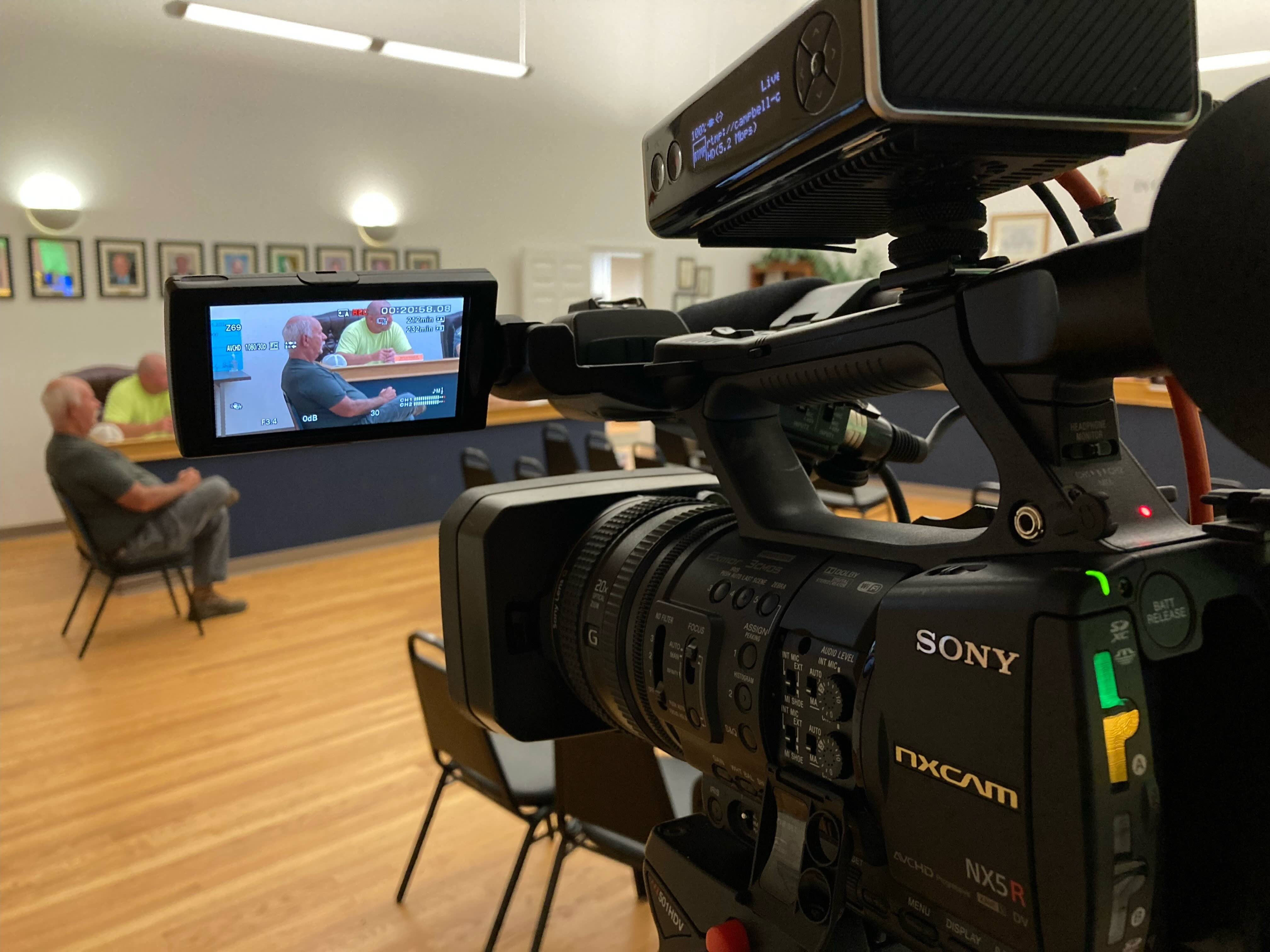Campbell Media Relies on Cablecast to Provide Meeting Coverage for 11 Cities
Campbell Media provides city meeting coverage in multiple cities and simulcasts live to multiple platforms simultaneously using Cablecast solutions

MINNEAPOLIS—Cablecast has released a case study showing how Campbell Media in Campbell County, Ky. uses its solutions to provide meeting coverage for 11 different cities as well as the county’s fiscal court.
To manage the workflow, Brady Wurtz, programming coordinator at Campbell Media, said he relies on the full spectrum of automation hardware and distribution service solutions from Cablecast Community Media, a division of Tightrope Media Systems.
“We are a very small staff and we cover all of the county. We have a lot of things going on and we can’t all be there at the same time,” Wurtz said. “We’ve got a lot of ground to cover. There are probably 19 different regularly scheduled meetings every month that we cover in about 15 locations.”
Campbell Media has a small, dedicated team of three full-time employees, plus a handful of contractors to provide the programming.
It is a service of the Campbell County Cable Board, the local cable TV regulatory authority that manages the franchise agreements with Charter/Spectrum and Altafiber. Its coverage of government meetings is mainly commissioned by the cities it serves. The production schedule is full of regularly scheduled meetings, but sometimes Campbell Media is asked to cover special meetings as well.
“If a city reaches out to us, we’re happy to go out and cover their meetings, even broadcast them live,” Wurtz said. “Usually, we post them on our website by the next day, and we’ll broadcast them on TV for people who don't have internet access. We try to make sure everyone can view what’s going on in their community.”
Tasked with providing a direct outlet for community programming, Campbell Media supports six channels: one for government meetings and other content (CGOV); one for staff-produced content, such as sports coverage, events, and series (CCMC); two for public content, including shows produced by local producers (CCTV) and religious programming (CCRN); and two local education channels. Cablecast VIO 4 video servers are allocated to the government and Campbell Media channels, while Cablecast VIO 2s are dedicated to the public content channels. The education channels use a combination of a Cablecast VIO Lite and an older Flex Series server, Cablecast reported.
The professional video industry's #1 source for news, trends and product and tech information. Sign up below.
Cablecast CG is used for community calendars for each channel. There are also plans to include a new Cablecast service. Recently, Campbell Media received a grant to cover the cost of captioning its programming, which will soon become a requirement for web and mobile app content due to the ADA’s new WCAG 2.1, Level AA rules. As a result, Wurtz expects to add Cablecast Closed Captioning to the workflow this fall.
“I like the streamlined Cablecast interface. It makes it easy for our small staff to simplify workflows. Staying in one ecosystem also eliminates the ‘middle man’ of other hardware and software systems that can create points of failure,” Wurtz said. “And I really, really appreciate the support. Cablecast’s tech support team understands the workflow of PEG stations and responds quickly to fix any issues we have. I’ve never considered looking somewhere else for our channel playout.”
Campbell Media only has one permanent setup, their own studio, which is where they cover their own cable board meetings. Most meeting coverage is limited to a single camera shoot. Some of the meetings are conducted in buildings that do not have the infrastructure to support multi-camera coverage. The crew has to setup the camera and tripod, as well as audio and streaming equipment, then remove it after the meeting is over.
For live meeting coverage on cable and online, Campbell Media takes an HDMI feed from the camera into one of its three Teradek VidiU streaming appliances. An Ethernet port at the government building then allows Campbell Media to feed the video into the Cablecast ecosystem back at its studio.
Through its Cablecast LIVE hardware, which produces adaptive bit rate live HD streams, Campbell Media uses Cablecast REFLECT to cache popular VOD content in the cloud. Mobile and OTT viewers are encouraged to view programming through the Campbell Media app, which is available for the Apple TV and Roku platforms.
“We livestream an RTMP feed, which we ingest through our Cablecast RTMP and broadcast to our cable station. From there we will simulcast onto our website for live streaming,” Wurtz said. “Same thing with our apps – viewers can go in and watch our apps on their phones or their OTT boxes. Some meetings want us to broadcast to social media platforms like Facebook, so we do that as well.”
George Winslow is the senior content producer for TV Tech. He has written about the television, media and technology industries for nearly 30 years for such publications as Broadcasting & Cable, Multichannel News and TV Tech. Over the years, he has edited a number of magazines, including Multichannel News International and World Screen, and moderated panels at such major industry events as NAB and MIP TV. He has published two books and dozens of encyclopedia articles on such subjects as the media, New York City history and economics.

